Not everything golden at McDonald’s turns out to be a hit.
While the fast-food giant has cooked up global icons like the Big Mac and Chicken McNuggets, it’s also rolled out some truly eyebrow-raising menu items over the years.
From spaghetti served in a burger joint to seafood sandwiches that made diners question their life choices, McDonald’s has had its fair share of flops. Some of these failed menu items were regional misfires, others were bold experiments that didn’t quite land—and a few were just plain bizarre.
Whether the problem was bad timing, offbeat ingredients, or simply poor taste, these items didn’t stand the test of time.
1. McSpaghetti
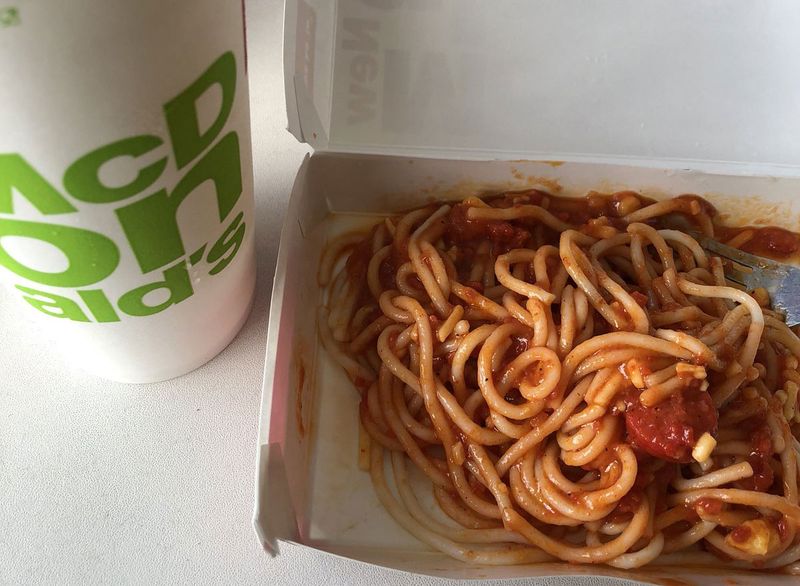
Introduced in the 1980s, McSpaghetti was McDonald’s attempt to diversify its menu by venturing into Italian cuisine. The idea of grabbing a quick spaghetti meal from the same place you’d buy a Big Mac didn’t resonate with many.
Most customers who tried it were left unimpressed, as the pasta was often overcooked and the sauce bland.
Although it aimed to capture the lunch crowd with a fast and convenient option, McSpaghetti never gained the traction McDonald’s hoped for. It was eventually discontinued in most locations but remains available in a few countries, including the Philippines. This quirky addition serves as a reminder that not every food concept can translate well across cultures.
Fun fact: McSpaghetti was part of the “McDonald’s Dinner Menu” experiment, which also included failed items like the McPizza.
2. McPizza
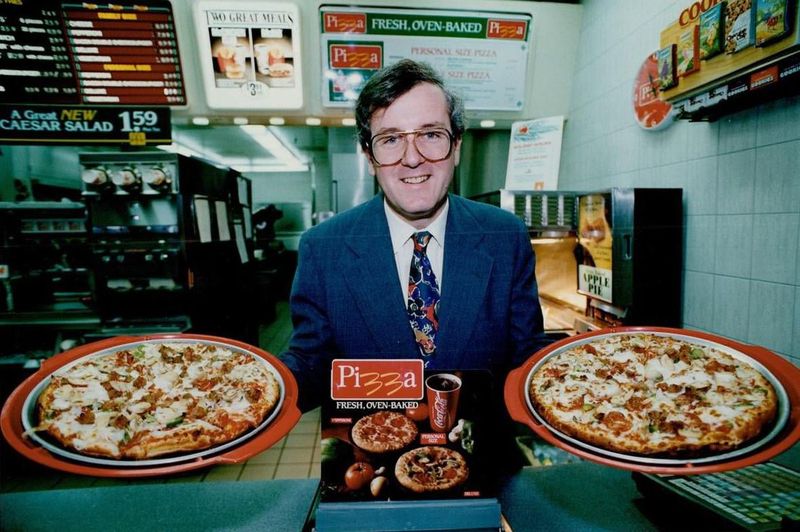
McDonald’s ventured into the pizza market in the late 1980s by introducing McPizza. The aim was to offer a dinner option that could compete with local pizza joints. However, the preparation time was much longer than traditional McDonald’s items, causing delays and frustration.
Customers weren’t willing to wait for a pizza when they could grab a burger in seconds. The taste failed to impress as well, with many claiming it fell short of pizzeria standards. Eventually, McPizza was discontinued in most areas, although a few locations kept it around a bit longer.
The McPizza remains a nostalgic memory for some, but a puzzling chapter in McDonald’s history for most. It stands as a testament to the fast-food giant’s ambitious, albeit unsuccessful, experiments.
3. Hula Burger

In an effort to create a vegetarian option during Lent, McDonald’s introduced the Hula Burger in the 1960s. This creation involved replacing the burger patty with a slice of grilled pineapple. The concept was intriguing, but the execution left much to be desired.
The combination of sweet pineapple and savory burger toppings didn’t sit well with most customers. While innovative, the Hula Burger couldn’t compete with the newly introduced Filet-O-Fish sandwich, which quickly became a hit.
As a result, the Hula Burger faded into obscurity, leaving behind a legacy as one of McDonald’s more peculiar offerings. It highlights the company’s willingness to take risks, even if they don’t always pay off.
4. McLobster
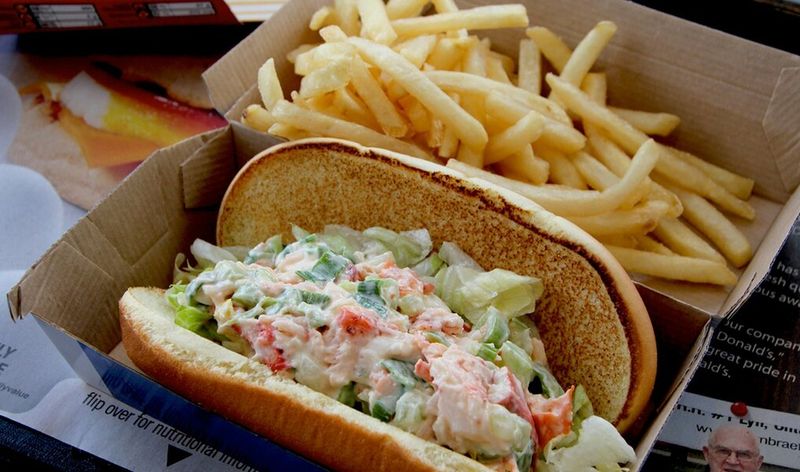
During the summer months in select locations, McDonald’s introduced the McLobster roll. Targeting regions in Northeast America where lobster is popular, this seafood sandwich aimed to capture the essence of a New England summer.
However, the McLobster’s high price point and inconsistent quality made it a tough sell. Customers often found the lobster meat to be rubbery and lacking flavor, far from the fresh, succulent lobster rolls they were accustomed to.
Despite its limited availability, the McLobster continues to resurface every few years, stirring curiosity and skepticism. It’s a prime example of McDonald’s trying to cater to regional tastes but falling short of expectations.
5. Arch Deluxe
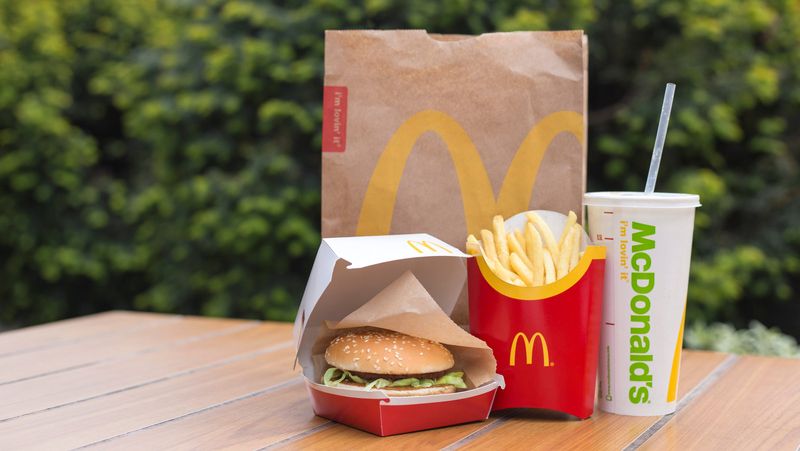
Positioned as the “burger with grown-up taste,” the Arch Deluxe was McDonald’s attempt to appeal to a more adult audience in the 1990s. It featured a unique sauce, peppered bacon, and a potato flour bun. Despite its sophisticated presentation, the Arch Deluxe struggled to gain popularity.
The marketing campaign, which portrayed kids disliking the burger, might have backfired by alienating the core family-centric customer base. Furthermore, the higher price point did not encourage parents to switch from more kid-friendly options.
Though it was a bold move to differentiate the menu, the Arch Deluxe ultimately failed to resonate with consumers. It’s remembered today as an ambitious, yet ill-fated, attempt to upscale McDonald’s offerings.
6. McDLT
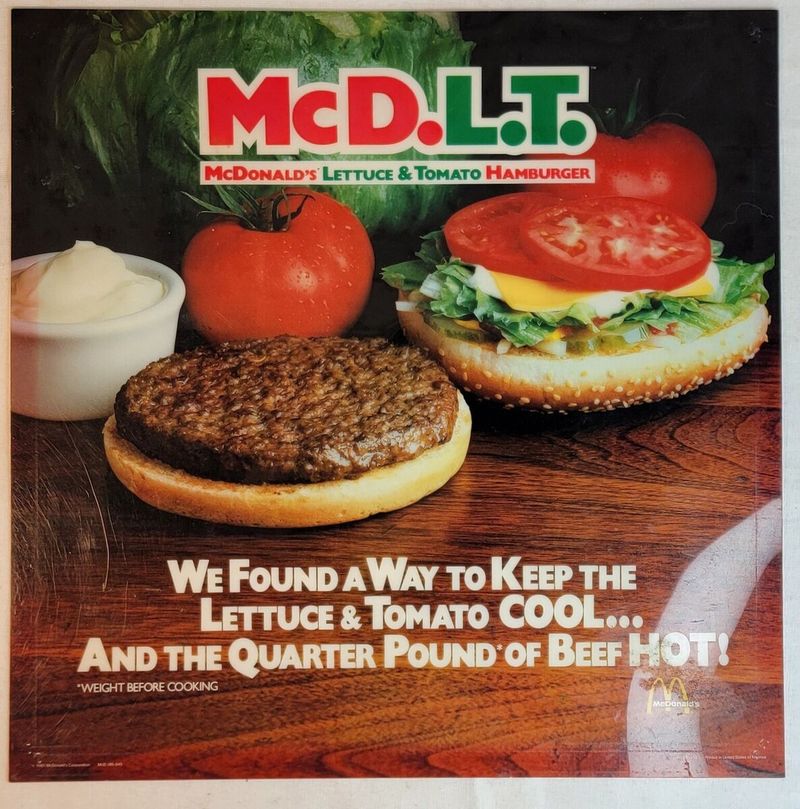
The McDLT, introduced in the mid-1980s, was McDonald’s answer to keeping hot and cold ingredients separate until consumption. It came in a unique two-compartment Styrofoam container that kept the lettuce and tomato fresh while the burger patties stayed warm.
While the idea was innovative, the environmental impact of the packaging was a significant downside. Customers also found the assembly process cumbersome, making it less convenient than other menu items.
Ultimately, the McDLT was discontinued, but it remains a nostalgic memory for some. It serves as a reminder of the fast-food chain’s creative approach to solving culinary challenges, even if it didn’t quite work out.
7. McAfrika
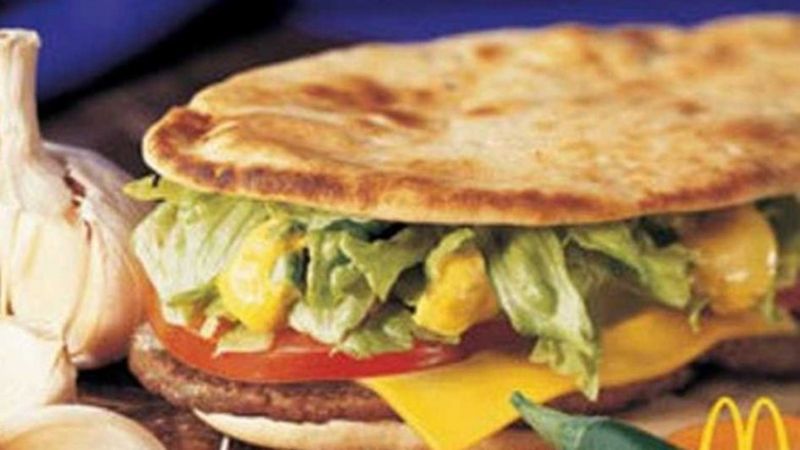
McDonald’s faced a public relations disaster with the McAfrika, launched in Norway and Denmark in the early 2000s. This flatbread sandwich, inspired by African flavors, was introduced during a time of famine in Southern Africa.
Critics blasted the fast-food giant for its insensitivity and poor timing. The company attempted damage control by raising awareness and funds for the affected regions, but the backlash overshadowed the product itself.
The McAfrika was swiftly pulled from menus, becoming a case study in corporate responsibility mishaps. It highlights the importance of cultural sensitivity and the global impact of marketing decisions.
8. McHotDog

The McHotDog was McDonald’s foray into the hotdog market, primarily tested in the Midwest and some international locations. While the concept seemed logical, given the popularity of hotdogs, it didn’t translate well in practice.
Customers found the taste to be unremarkable, and the quality inconsistent with McDonald’s standards. The McHotDog failed to stand out in a sea of competitors offering more authentic hotdog experiences.
Though it was a novel attempt to expand the menu, the McHotDog didn’t catch on. It serves as an example of how even simple ideas can miss the mark when not executed perfectly.
9. McStuffins
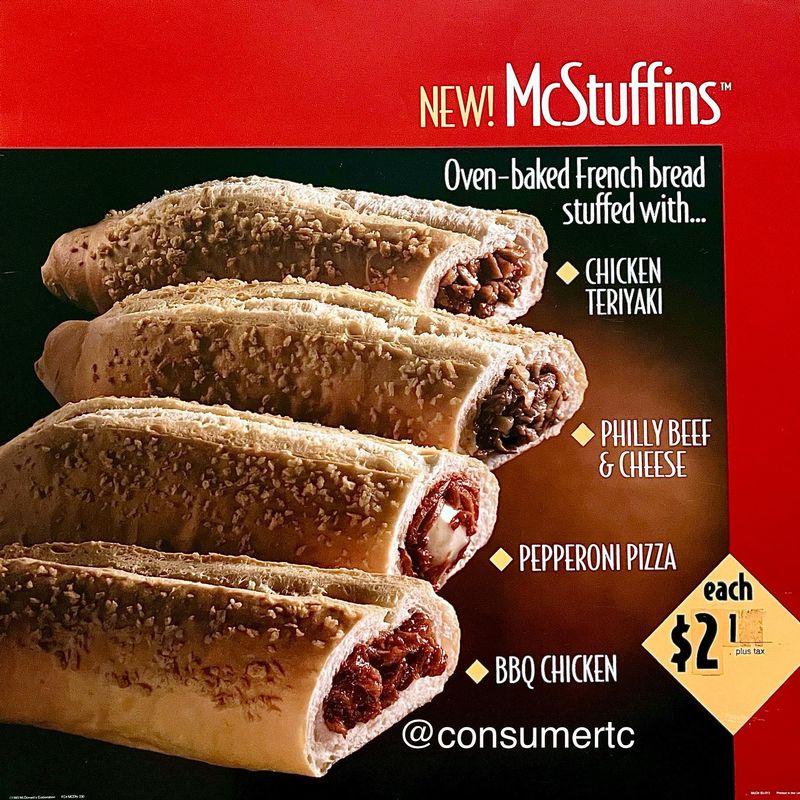
Attempting to tap into the handheld food trend, McDonald’s introduced McStuffins in the early 1990s. These were small, stuffed pastries filled with various ingredients, from pepperoni and cheese to chicken teriyaki.
The concept was intended to provide a portable meal option, but the execution fell short. Customers found the fillings to be sparse and the pastry dry, leading to a less than satisfying eating experience.
Despite its catchy name and intriguing premise, McStuffins didn’t last long on the menu. It stands as a reminder of the challenges in balancing convenience with taste and quality.
10. Onion Nuggets
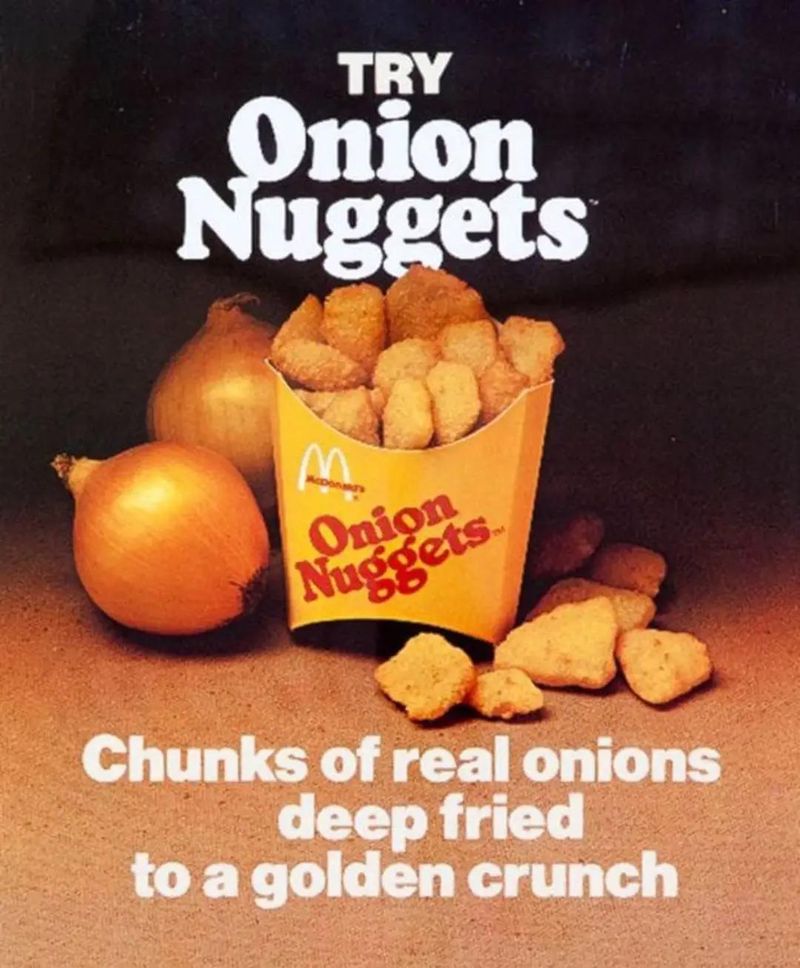
Before the popularity of chicken nuggets, McDonald’s experimented with Onion Nuggets in the 1970s. These bite-sized pieces of deep-fried onion aimed to provide a unique snack option.
While some customers appreciated the crispy texture, others were put off by the strong onion flavor and greasy feel. The item failed to gain a broad fanbase, leading to its quiet discontinuation.
Though Onion Nuggets didn’t make a lasting impression, they paved the way for future innovations in McDonald’s side offerings. They remind us that even the simplest ideas require careful consideration of consumer tastes.
11. McLean Deluxe
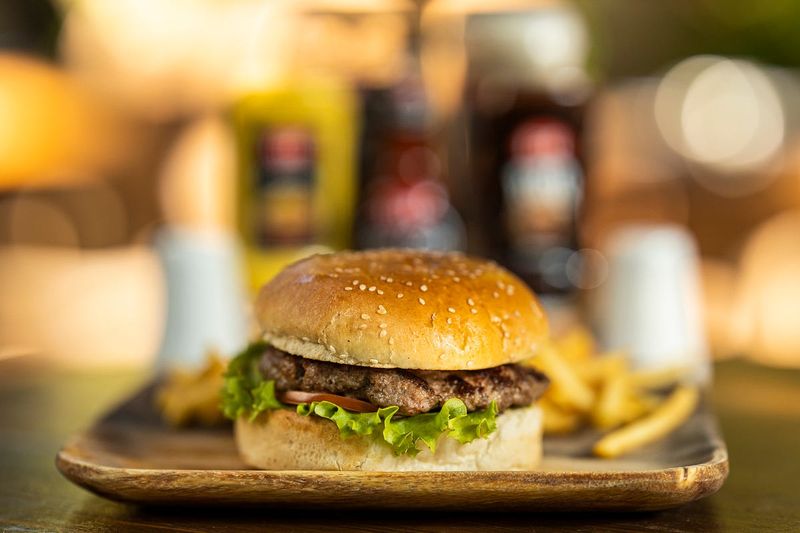
In the 1990s, health consciousness was on the rise, and McDonald’s responded with the McLean Deluxe. This burger was made with “lean beef,” where some of the beef fat was replaced with water and seaweed extract to reduce calorie content.
While the idea was to appeal to health-conscious consumers, the taste didn’t quite match expectations. Many found the texture and flavor lacking compared to traditional burgers. The McLean Deluxe also suffered from a marketing message that didn’t resonate with typical fast-food buyers.
The product was eventually phased out, but it remains a reminder of the challenges faced by fast-food chains in balancing taste with health trends.
12. Fish McBites
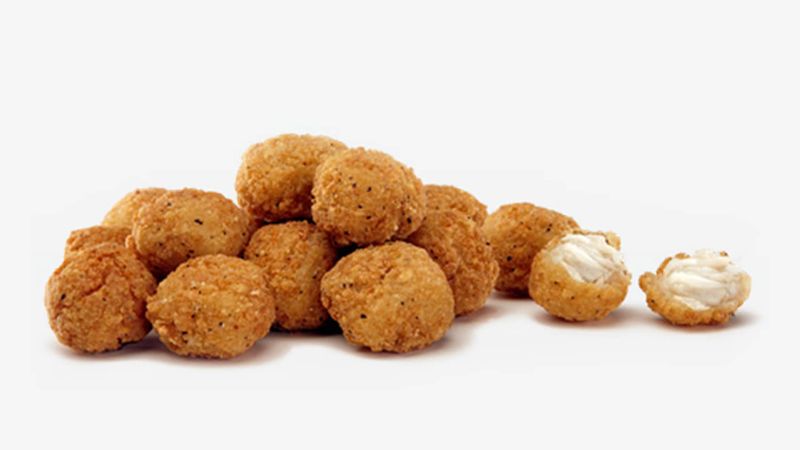
Fish McBites, launched in 2013, were McDonald’s attempt to expand its seafood offerings beyond the Filet-O-Fish. These bite-sized pieces were battered and fried, served with a tangy tartar sauce.
Though the concept was intriguing, execution was inconsistent. Some customers found the coating too thick and the fish lacking flavor. Additionally, the promotional campaign didn’t make a strong impact, leading to lukewarm reception.
Fish McBites were discontinued shortly after their introduction. This attempt highlights the difficulties in diversifying fast-food menus while maintaining quality and customer interest.
13. Mighty Wings
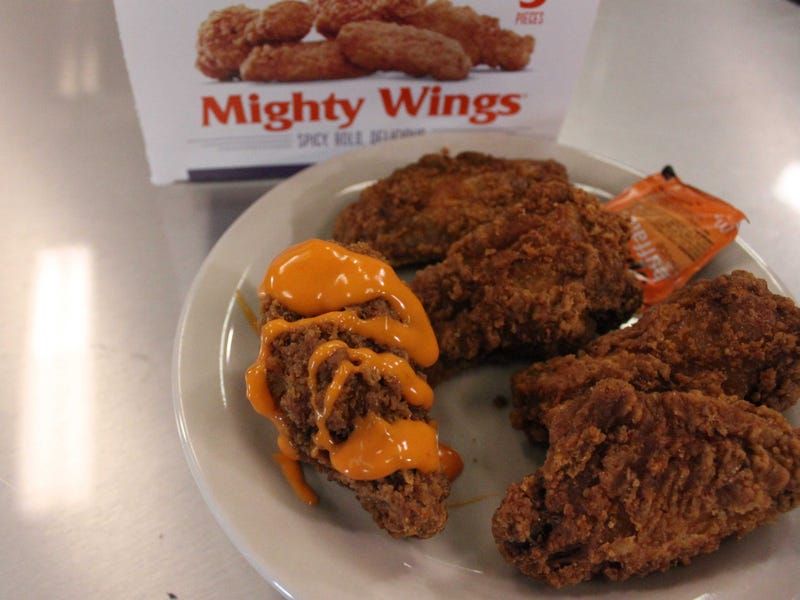
Introduced in 2013, Mighty Wings were McDonald’s attempt to capture the popular wings market. They were larger than typical wings and came with a spicy breading, aiming to attract spice lovers.
Despite their flavorful punch, the price point was higher than customers were willing to pay, especially with cheaper alternatives available elsewhere. Coupled with inconsistent cooking, the wings didn’t live up to the hype.
The product was eventually dropped, serving as a lesson in understanding market pricing and consumer expectations. Mighty Wings remain a spicy memory for those who dared to try them.
14. Chicken Selects
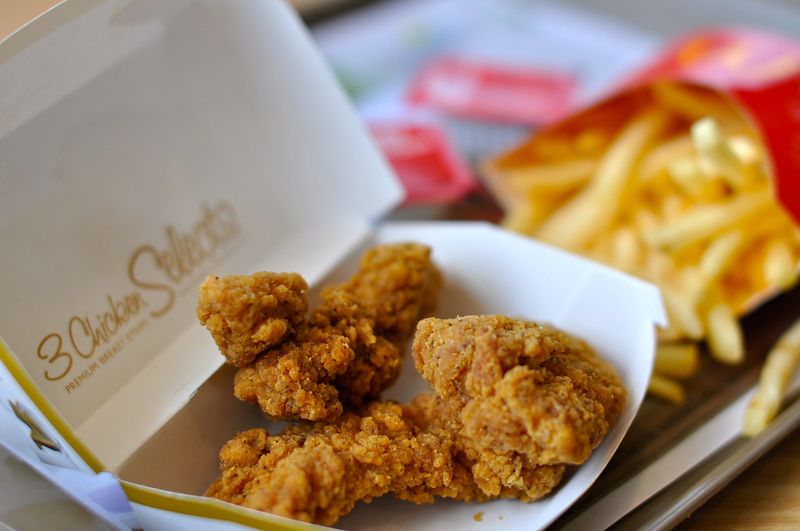
Chicken Selects were introduced in the early 2000s as a premium chicken offering. They were crispy chicken tenders, marketed as a more upscale alternative to McNuggets.
While initially popular, the Selects faced issues with consistency and pricing. Some customers found them too similar to more affordable options, and the premium price tag didn’t help their cause.
Eventually discontinued, Chicken Selects illustrate the challenge of balancing quality with cost in fast-food offerings. They’re a reminder of McDonald’s ongoing attempts to refine its chicken menu.
15. McCrab
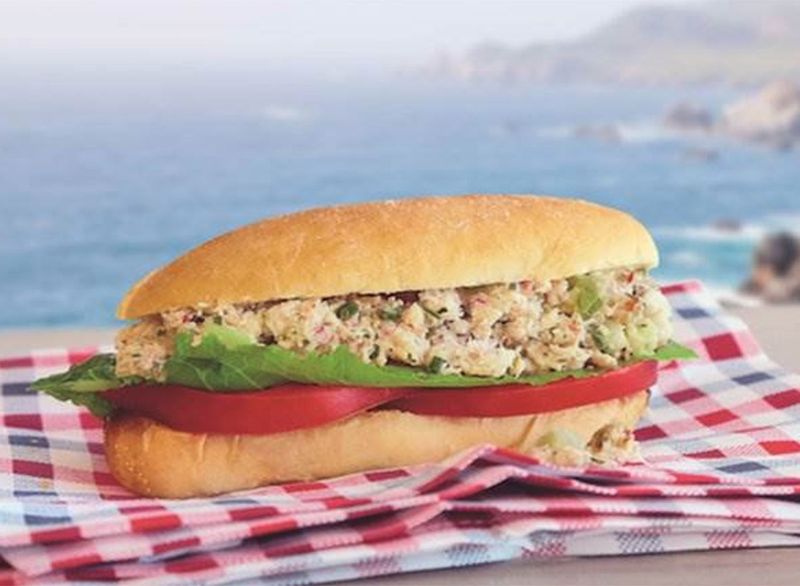
In a bid to appeal to Maryland’s crab-loving population, McDonald’s tested the McCrab sandwich. It aimed to capture the essence of a crab cake with its own fast-food twist.
However, the McCrab’s execution left much to be desired. Customers found the flavor unremarkable and the texture unappealing compared to traditional crab offerings. The product did not resonate with local tastes.
The McCrab was discontinued after a short trial, highlighting the complexities of regional adaptation in fast food. It’s a reminder of how crucial authentic taste is in specialized markets.
16. McSoup

McSoup was McDonald’s attempt to offer a warm, comforting option during the colder months. Available in select markets, it came in flavors like chicken noodle and tomato.
Despite being a novel idea, customers found the soup to be bland and unremarkable. The fast-food setting didn’t lend itself well to soup consumption, leading to a lack of interest.
McSoup quietly disappeared from menus, serving as a lesson in understanding the dining context. It’s a whimsical footnote in McDonald’s extensive menu experiments.
17. McSalad Shakers
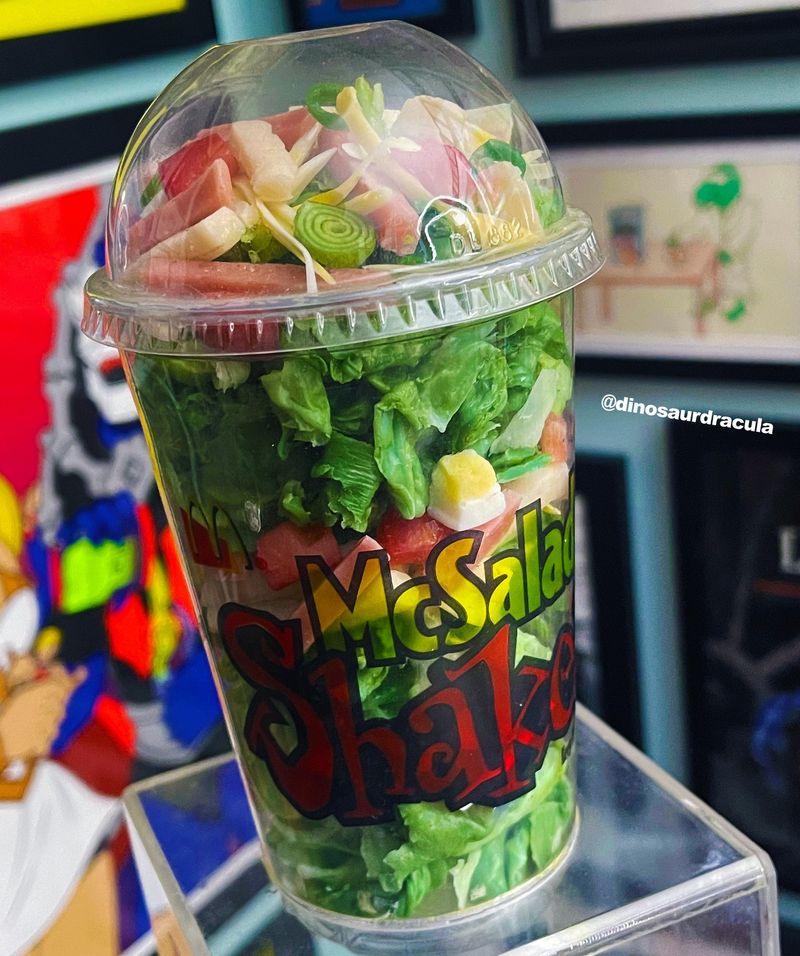
Launched in the early 2000s, McSalad Shakers offered a novel way to enjoy salads on the go. These salads came in a tall cup, allowing customers to mix the dressing by shaking.
While innovative, the execution was less than ideal. Customers found the mixing process messy, and the salads weren’t as fresh as expected. Additionally, the limited variety didn’t help sustain interest.
McSalad Shakers were phased out, but they remain a quirky memory in McDonald’s history. They highlight the importance of practicality and freshness in fast-food innovations.
18. Cheddar Melt
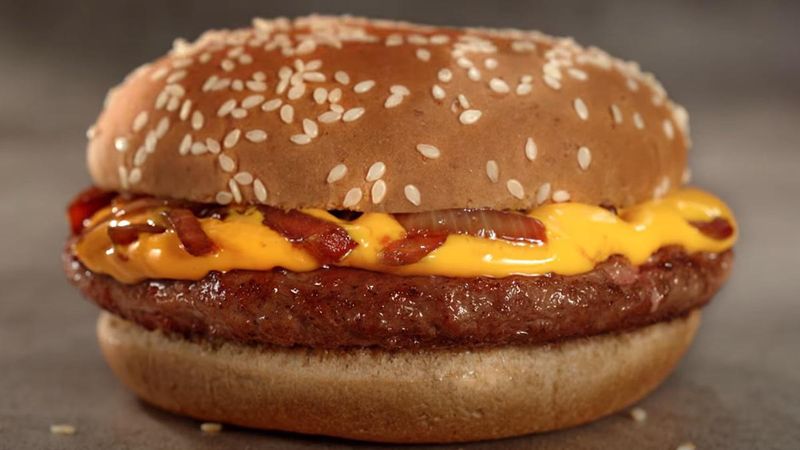
In the late 1980s, McDonald’s introduced the Cheddar Melt, a burger topped with melted cheddar cheese sauce and grilled onions. It was a seasonal offering that aimed to add a savory twist to the typical burger.
Despite its rich flavor, the Cheddar Melt struggled to maintain a loyal customer base. The cheese sauce was sometimes overpowering, and the combination didn’t appeal to all palates.
The item was eventually phased out, but it remains a fond memory for some burger enthusiasts. It highlights the challenge of balancing bold flavors with mass appeal.
19. McRib
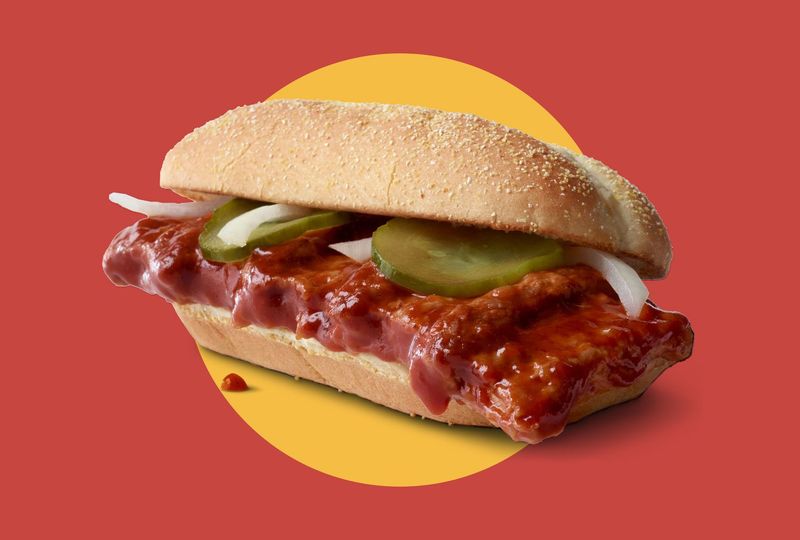
The McRib is famous for its periodic disappearance and reappearance, keeping customers guessing. First introduced in 1981, this sandwich features a boneless pork patty shaped like ribs, smothered in barbecue sauce.
Despite its cult following, the McRib has faced criticism for its processed taste and texture. The sandwich’s limited availability fuels its mystique, with fans eagerly awaiting its return.
While not a permanent fixture, the McRib remains a beloved, albeit polarizing, part of McDonald’s history. It highlights the power of exclusivity and scarcity in marketing strategies.
20. McGratin Croquette
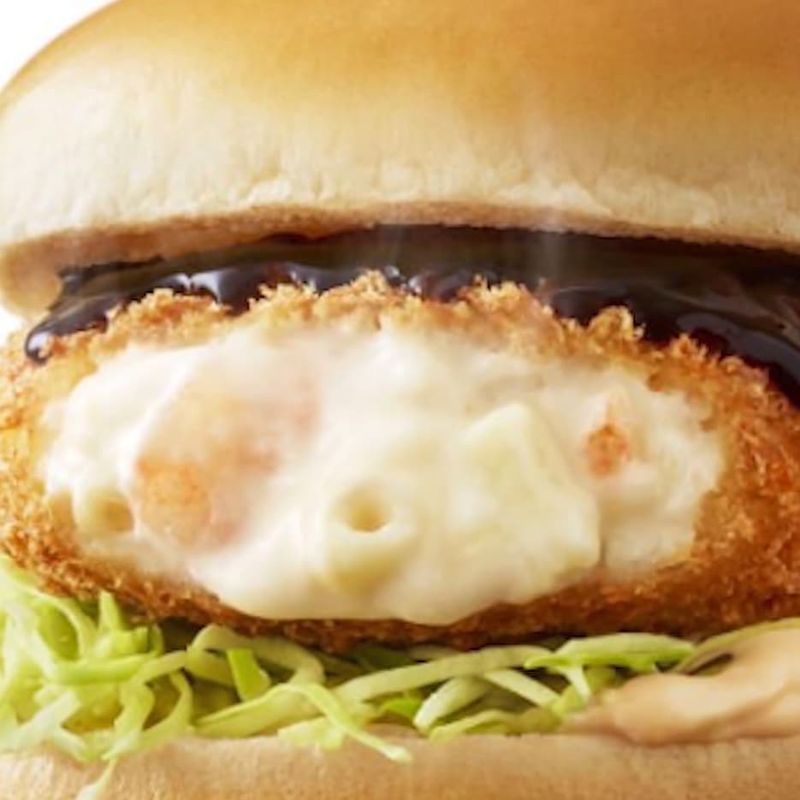
In Japan, McDonald’s introduced the McGratin Croquette, a seasonal sandwich featuring a patty made of crab, shrimp, and macaroni in a creamy sauce. It catered to local tastes and offered a unique twist on fast food.
While initially popular, the rich and creamy filling wasn’t to everyone’s liking. The sandwich became more of a niche offering, with a divided reception among customers.
Despite mixed reviews, the McGratin Croquette remains a seasonal treat in Japan. It showcases McDonald’s ability to adapt its menu to different cultural preferences, even if the results are mixed.
21. Chop Chop Salad
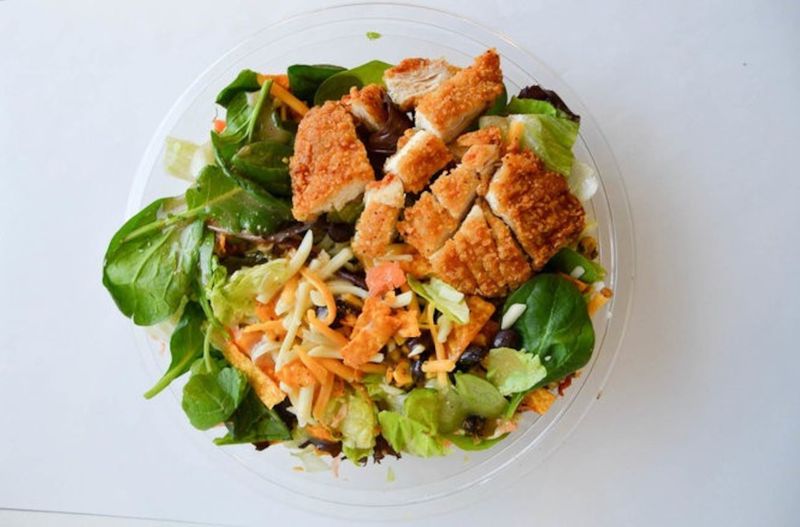
Chop Chop Salad was McDonald’s attempt to offer a fresh and healthy menu option. It featured a mix of chopped vegetables, grilled chicken, and a choice of dressings.
Despite the promising concept, the salad struggled with freshness and consistency. Customers often found the vegetables less crisp than expected, and the taste didn’t stand out in a competitive salad market.
The Chop Chop Salad was eventually discontinued, reflecting the challenges of maintaining quality in fast-food salads. It’s a reminder of the ongoing quest to balance health with convenience.
22. McDonald’s Chicken Fajitas
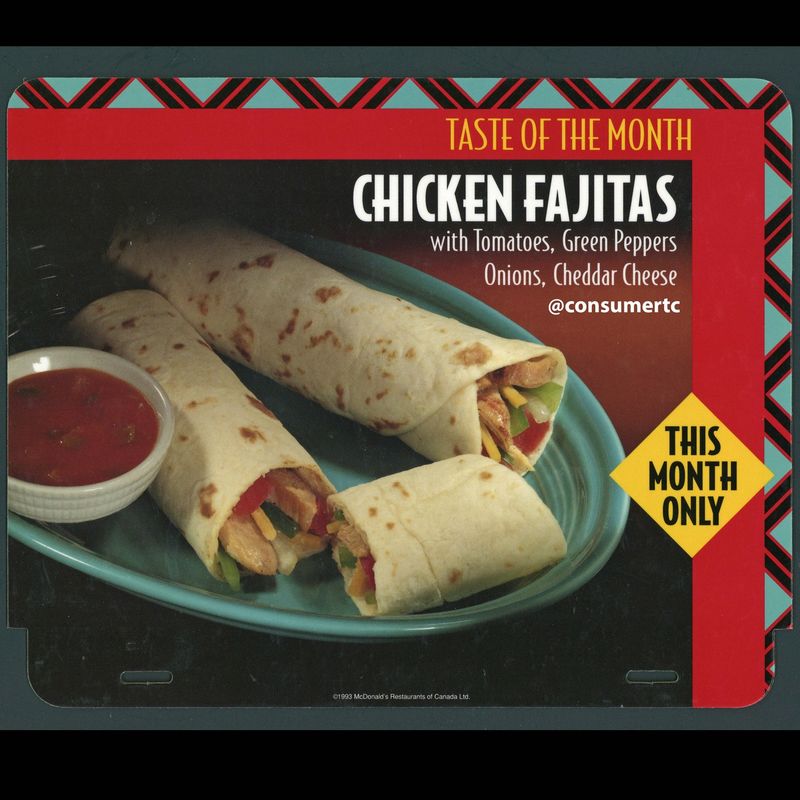
In the 1990s, McDonald’s tried to tap into the Tex-Mex craze with Chicken Fajitas. These featured grilled chicken strips, peppers, and onions wrapped in a warm tortilla, served with a side of salsa.
While the idea was appealing, the execution didn’t quite hit the mark. Customers found the fajitas lacking in flavor compared to traditional Tex-Mex offerings, and the limited spice options didn’t satisfy all palates.
Chicken Fajitas were eventually removed from the menu, illustrating the difficulties of capturing authentic flavors in fast food. It’s a nostalgic reminder of McDonald’s adventurous menu expansions.
23. McDonald’s Turkey BLT
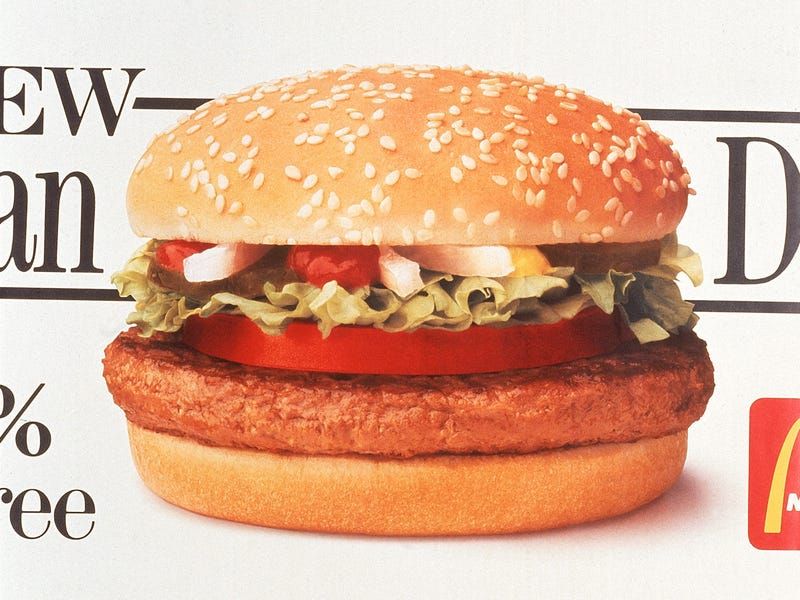
The Turkey BLT was McDonald’s attempt to offer a lighter, deli-style sandwich. Featuring turkey slices, bacon, lettuce, and tomato on a bun, it aimed to attract health-conscious consumers.
Despite its promising ingredients, the sandwich failed to deliver on taste. Many found the turkey dry, and the overall flavor didn’t set it apart from other deli sandwiches available outside of fast food.
Eventually discontinued, the Turkey BLT highlights the difficulties in creating healthy, flavorful options within the fast-food industry. It’s a testament to McDonald’s efforts to diversify but also the challenges of meeting diverse consumer expectations.
24. Big N’ Tasty
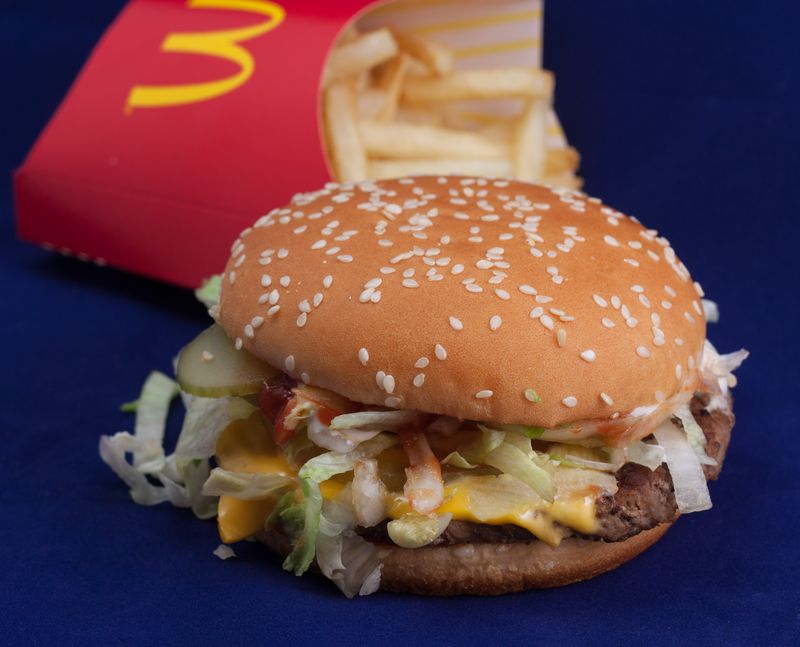
Launched in the late 1990s, the Big N’ Tasty burger was McDonald’s response to the popular Whopper from Burger King. It featured a larger beef patty, lettuce, tomato, and a special sauce, aiming to offer a juicy alternative.
Despite its flavorful combination, the Big N’ Tasty struggled to differentiate itself from existing menu items. Customers found it too similar to other burgers, leading to confusion rather than excitement.
The Big N’ Tasty was eventually retired, reminding us of the challenges in creating standout products in a saturated market. It’s a chapter in McDonald’s ongoing quest for innovation and differentiation.
25. McDonald’s Shamrock Sundae
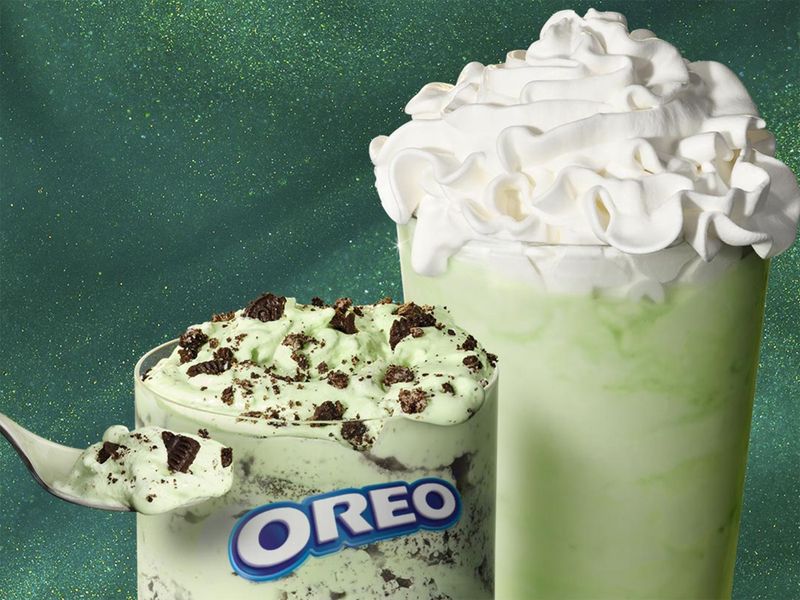
The Shamrock Sundae was McDonald’s brief addition to its seasonal offerings, featuring a vanilla ice cream topped with a mint-flavored syrup. Released alongside the popular Shamrock Shake, it aimed to capture the festive St. Patrick’s Day spirit.
While the sundae was refreshing, the mint taste divided opinions. Some customers loved it, while others found it overpowering, leading to a mixed reception.
Eventually, the Shamrock Sundae was discontinued in favor of its more famous counterpart, the Shamrock Shake. It reflects the balance needed between innovation and consumer preferences during holiday promotions.
Leave a comment